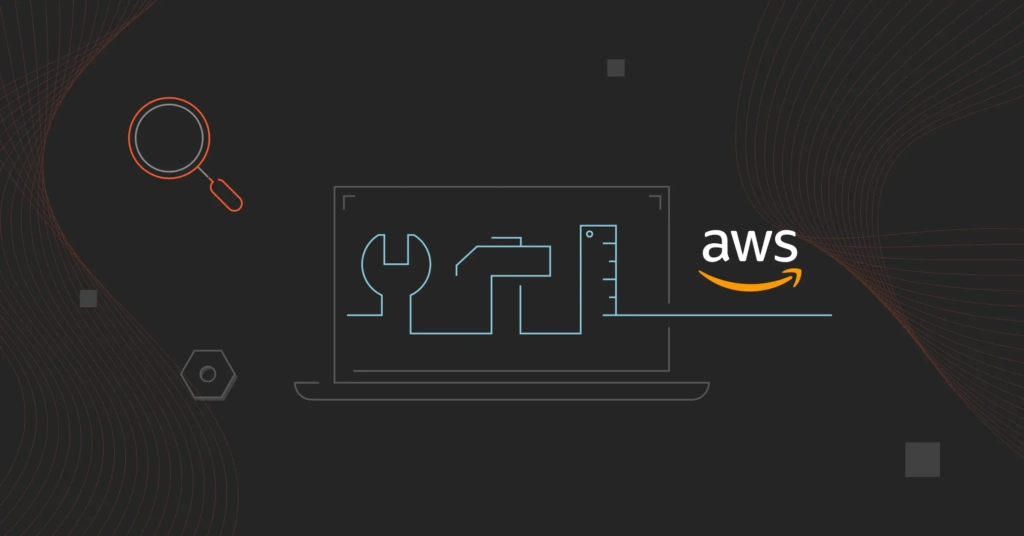Amazon Web Services (AWS) provides over 200 fully-featured services, that aim to make the cloud affordable and cost-efficient for the companies that use the popular cloud provider.
Yet, the average AWS customer wastes 30% to 35% of their cloud budget on unnecessary costs. But why?
Many organizations running on AWS report challenges managing their infrastructure — and some engineers feel their native tools simply do not cut it for managing their enterprise applications.
Some companies even opt for hybrid cloud solutions, as a result. But hybrid clouds and multi-cloud strategies can be more challenging to manage. So, is there a better way to manage your AWS public cloud services? Is it possible to avoid switching without increasing cloud costs?
It is possible when you have the right AWS management tool for your specific public cloud needs. In this guide, how a cost management tool can help you better understand your costs and nine of the best solutions for managing your AWS infrastructure today.
Table Of Contents
What Is An AWS Management Tool?
AWS management tools are services or solutions that help improve visibility, control, and optimization for AWS infrastructure.
AWS management tools do a lot more, depending on each one’s best use case. As examples, they configure, visualize, run, and optimize cloud operations, including cost, security, and performance.
AWS provides several native management and governance solutions, like AWS CloudFormation for modeling and setting up resources and AWS Service Catalog for operations management. The public cloud also supports third-party solutions for AWS customers who require more robust or suitable integrations for their workloads and applications.
As such, you’ll want to use one of the best cloud management tools for AWS to help you leverage AWS to its fullest.
The Best AWS Management Tools By Category
Here are a few cloud management tools for AWS that cover crucial areas such as cloud financial management, security and compliance, and cloud governance.
1. CloudZero – AWS Cloud Cost Management Platform
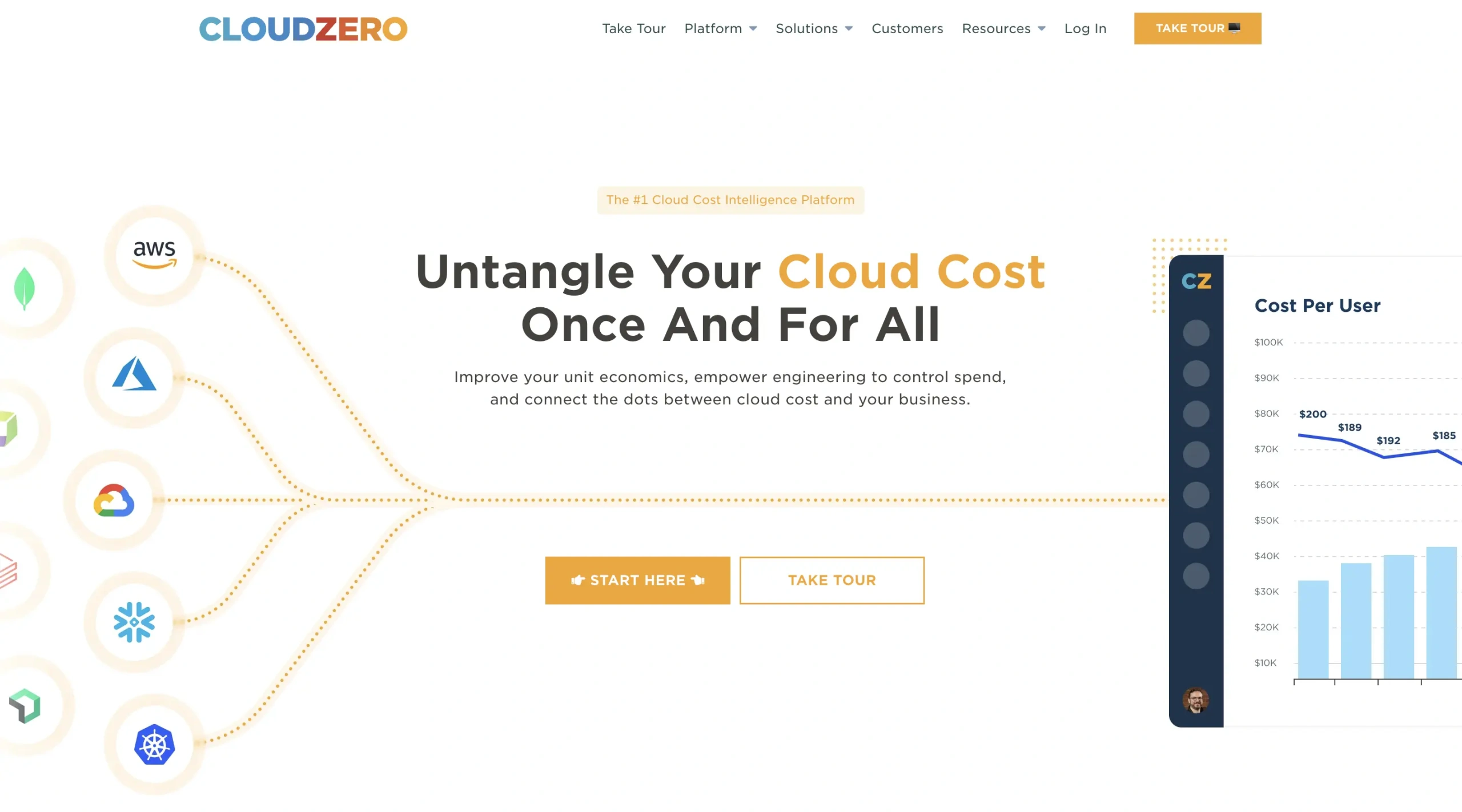
CloudZero is a cloud cost intelligence solution for SaaS and tech startups, scaleups, and enterprises. It helps organizations connect AWS cloud costs to the specific people, products, and processes that produce them.
While most AWS cost management tools display total cloud costs or averages, CloudZero gives you the option to see cost per customer, cost per product feature, cost per team, and more.
In addition, many tools display difficult-to-understand rows, columns, and charts, such as this:
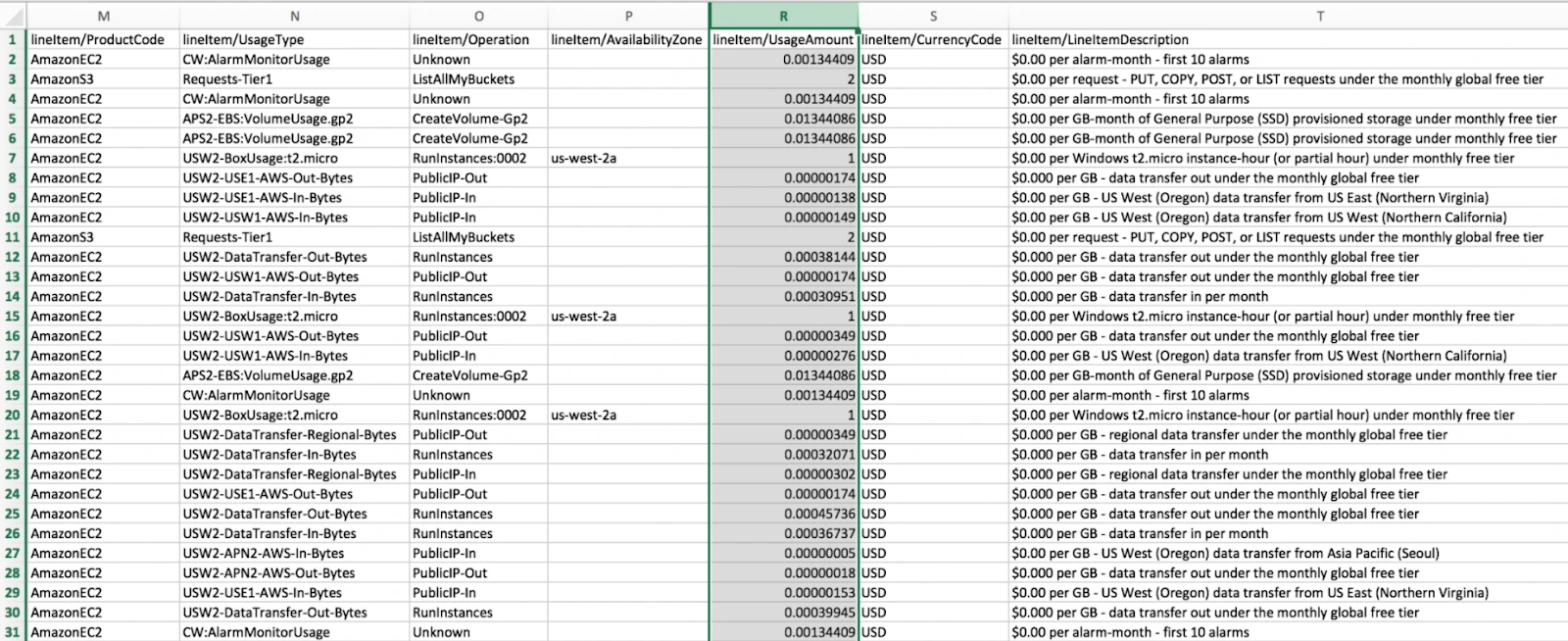
CloudZero’s intuitive interface makes it easy for you to understand precisely which components are driving your AWS costs and usage.
This level of unit cost economics can help you better calculate your cost of goods sold (COGS), set profitable SaaS pricing, and see whether your gross margins per customer, business unit, or service are sustainable.
Using CloudZero Budgets, FinOps teams can monitor, visualize, and control their AWS resource usage and costs. CloudZero’s cost anomaly detection can also help track cost spikes, alerting the appropriate person in time to prevent overspending.
One more thing. CloudZero collects cost telemetry on all types of AWS resources; tagged, untagged, and untaggable. The solution also provides cost visibility for Kubernetes, containerized applications, and multi-tenancy environments (shared costs).
Thus, CloudZero is a complete solution for better understanding your cloud spend and making informed engineering, product, and business decisions that will ensure profitability for your company. Schedule a demo here to see the power of CloudZero for yourself.
2. Blumira – AWS Security And Compliance Management Tool
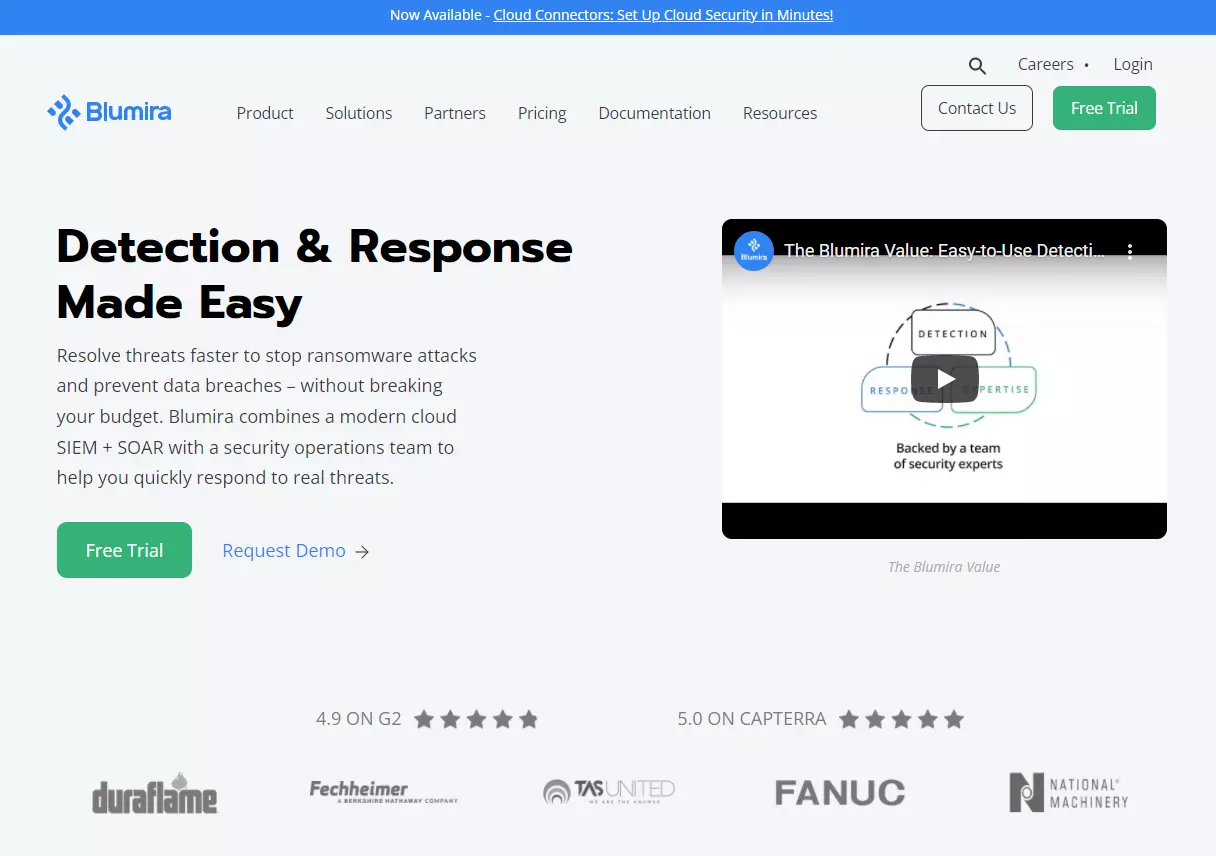
Blumira provides a modern platform for security information and event management (SIEM) to detect threats and stop ransomware attacks. It also includes security, orchestration, automation, and response (SOAR) tools. These capabilities make Blumira capable of responding to threats across your entire AWS infrastructure.
Apart from the security operation center features, Blumira also provides affordable compliance tools for small and medium-sized businesses (SMBs). You can still use the platform to meet compliance requirements for CMMC, NIST 800-53, and FFIEC. All this means that Blumira can be an excellent complement to your existing AWS security, identity, and compliance services.
3. ProsperOps – AWS Reserved Instances And Savings Plan Management Tool
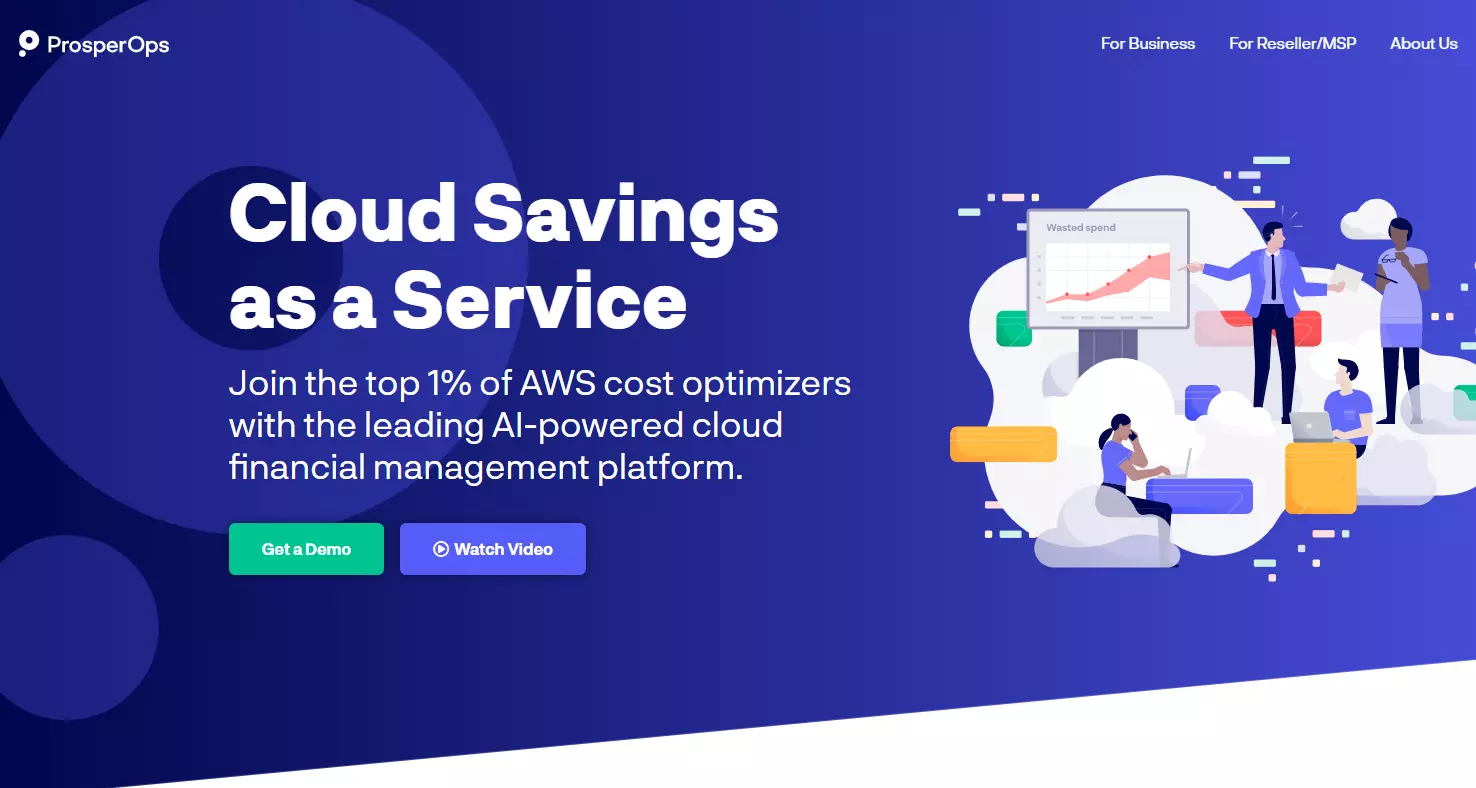
There are dozens of tools to optimize AWS Reserved Instances and Savings Plans. ProsperOps is unique in that it combines an optimal portfolio of RIs, SPs, and EDPs that intelligently adapt to changes in your environment. It then dynamically allocates the savings benefits on your behalf.
Because the service does not introduce changes to your infrastructure, there is less chance something could break and affect performance, uptime, or revenue. It manages your AWS commitments automatically and continuously, so you don’t have to kill time handling them manually.
4. Xosphere – AWS Spot Instances Management Tool
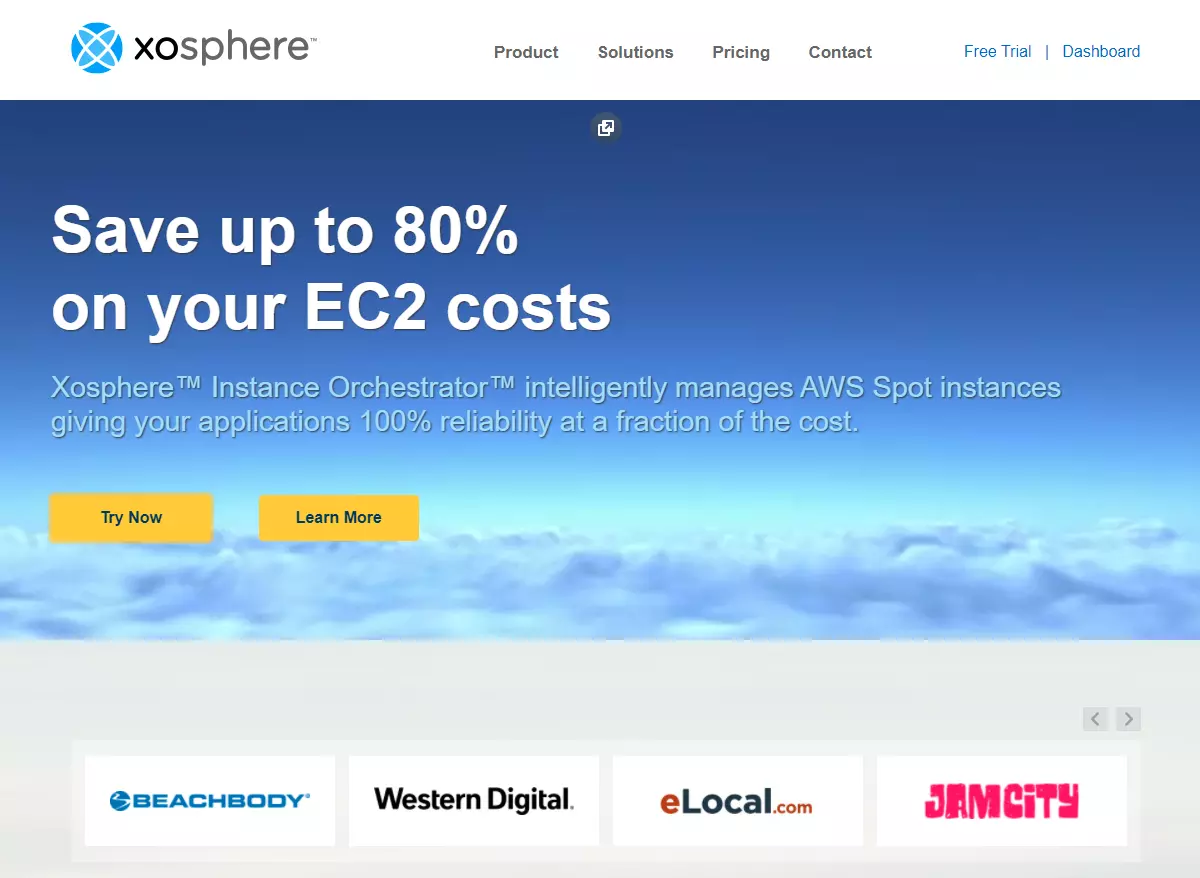
Xosphere’s unique automation solution optimizes performance and costs at the same time. You can continuously detect, bid for, and purchase just the right Spot Instances for your operations with Xosphere Instance Orchestrator.
Whenever available, the tool switches on-demand instances for competitively priced spot instances. Once Spot Instances become uneconomical, it quickly switches your setup back to On-Demand Instances.
Xosphere automates this switch without harming performance or availability. If you’ve struggled to take advantage of cheaper Spot Instances but couldn’t due to uptime requirements, this tool can help you meet both needs.
5. Dynatrace – AWS Application and Infrastructure Performance Management Tool
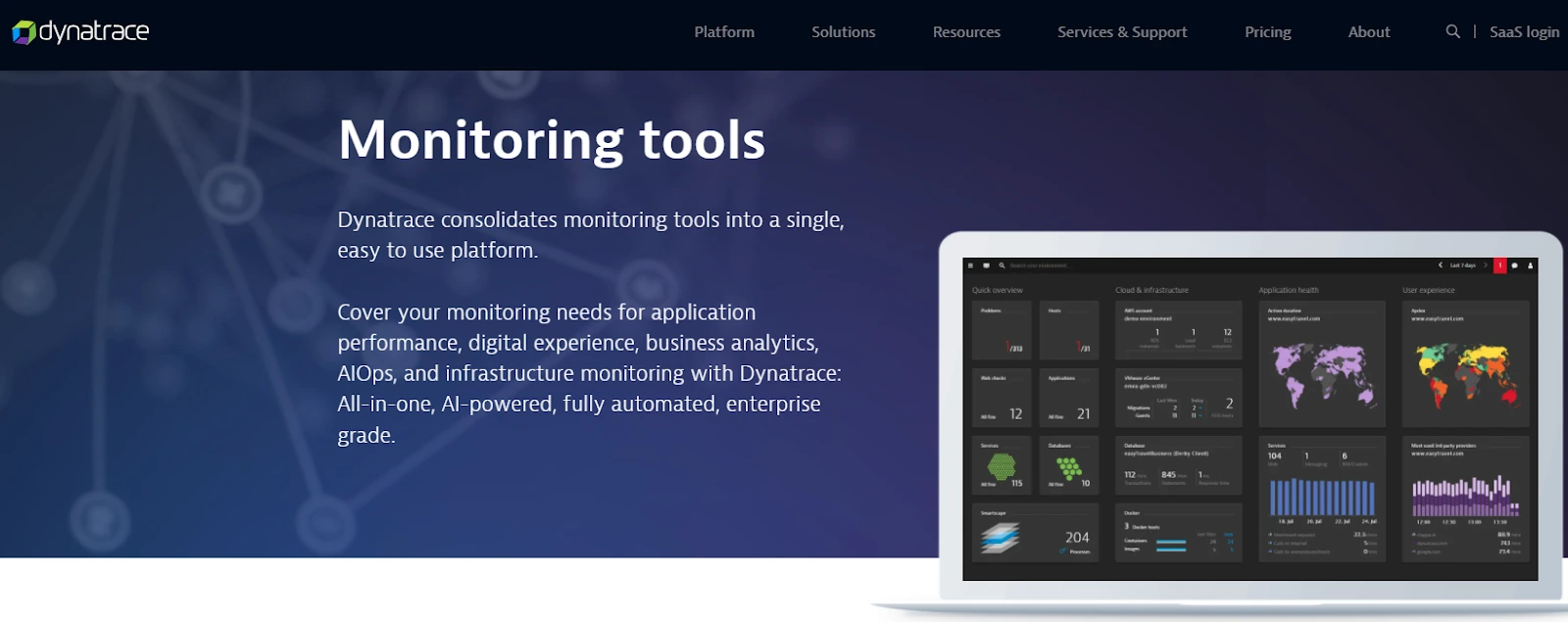
Dynatrace APM offers a combination of intelligent automation and continuous observability to give you better visibility into the health of your AWS applications and infrastructure. It simplifies the process by using metrics, traces, and logs.
Dynatrace’s code-level tracing gives you real-time business insights, digital experience replays, and a clear picture of your front-end and back-end application performance. By tracing requests through the entire call tree, the tool can identify root causes that are easy to miss.
Besides cloud-native workloads, Dynatrace also works with microservices and Kubernetes environments. You can also use Dynatrace in AWS hybrid clouds to make sense of all your APM and infrastructure-generated insights in one place.
6. CoreStack – AWS Cloud Governance Tool
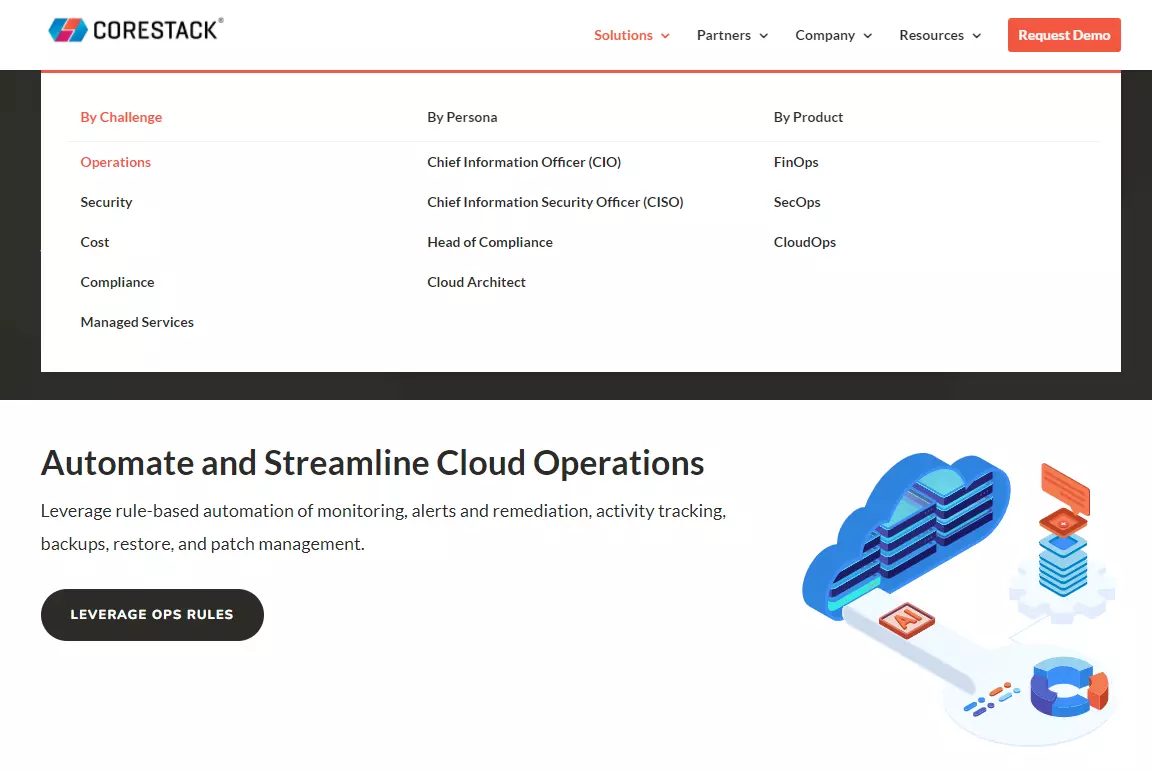
CoreStack provides Enterprise Cloud Governance (ECG), Enterprise Cloud Compliance (ECC), and MSP Cloud Governance for AWS customers. Corestack automates AWS management tasks, such as activity tracking, alerting, recovery and back up, and patch management using rule-based automation.
With CoreStack, you can standardize processes, control multi-cloud operations, and establish policies to ensure optimal resource use, cost efficiency, and performance in the AWS public cloud. As a result, you can more easily implement and maintain well-architected framework components across your stack.
7. Ylastic – Mobile And Web CloudOps Console For AWS
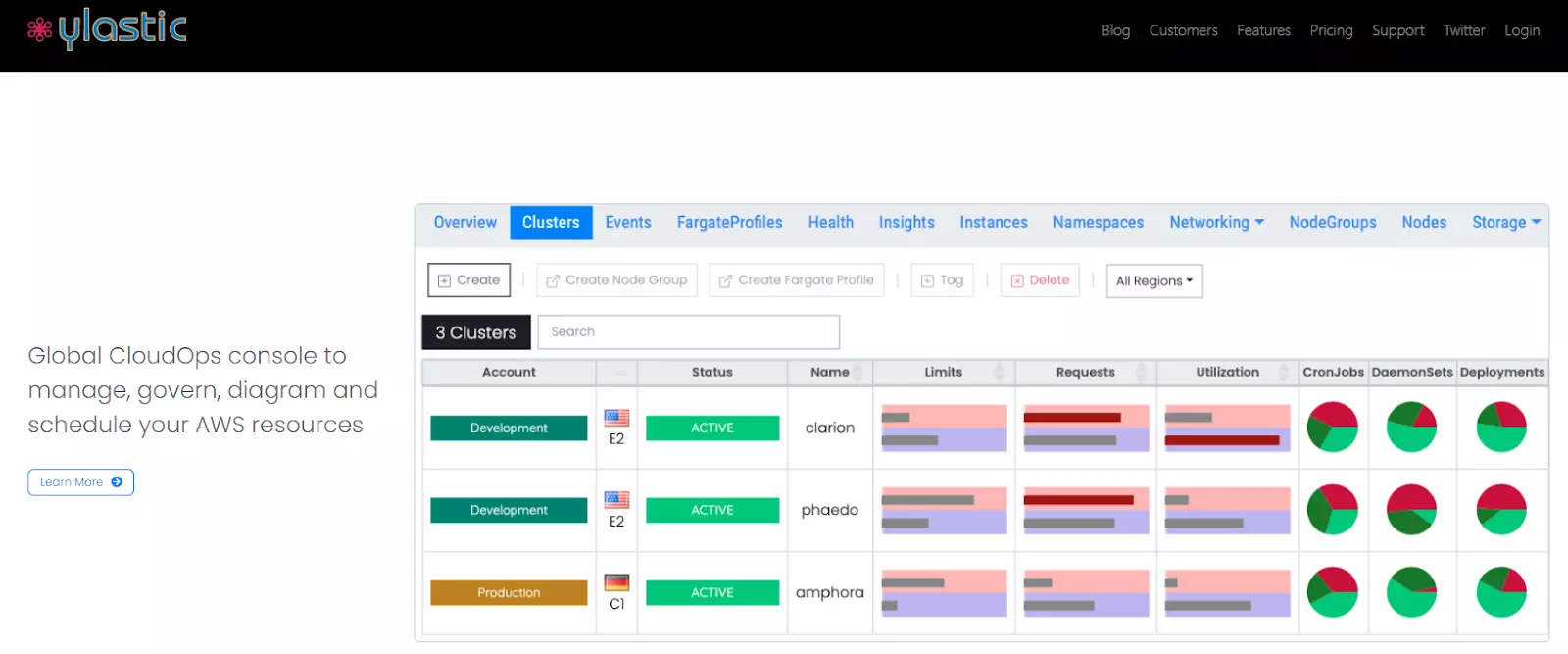
With Ylastic, teams can visualize, analyze, and manage all the components of their AWS environments via a web browser or mobile device. Ylastic’s capabilities let you automate backups to EBS, cost analysis, and resource consumption in AWS.
You can also manage multiple accounts across various regions and schedule AWS infrastructure tasks using the platform. The platform also seamlessly integrates with AWS CloudWatch alarms so that it notifies you of any issues in your AWS cloud by Twitter, SMS message, and email.
Additionally, Ylastic provides a convenient interface to monitor the health of your AWS environment. A quick glance at the dash reveals four tabs for monitoring SimpleDB, Amazon EC2, Amazon S3, and Amazon SQS.
8. Scalr – Multi-Cloud Management Tool Dor AWS Customers
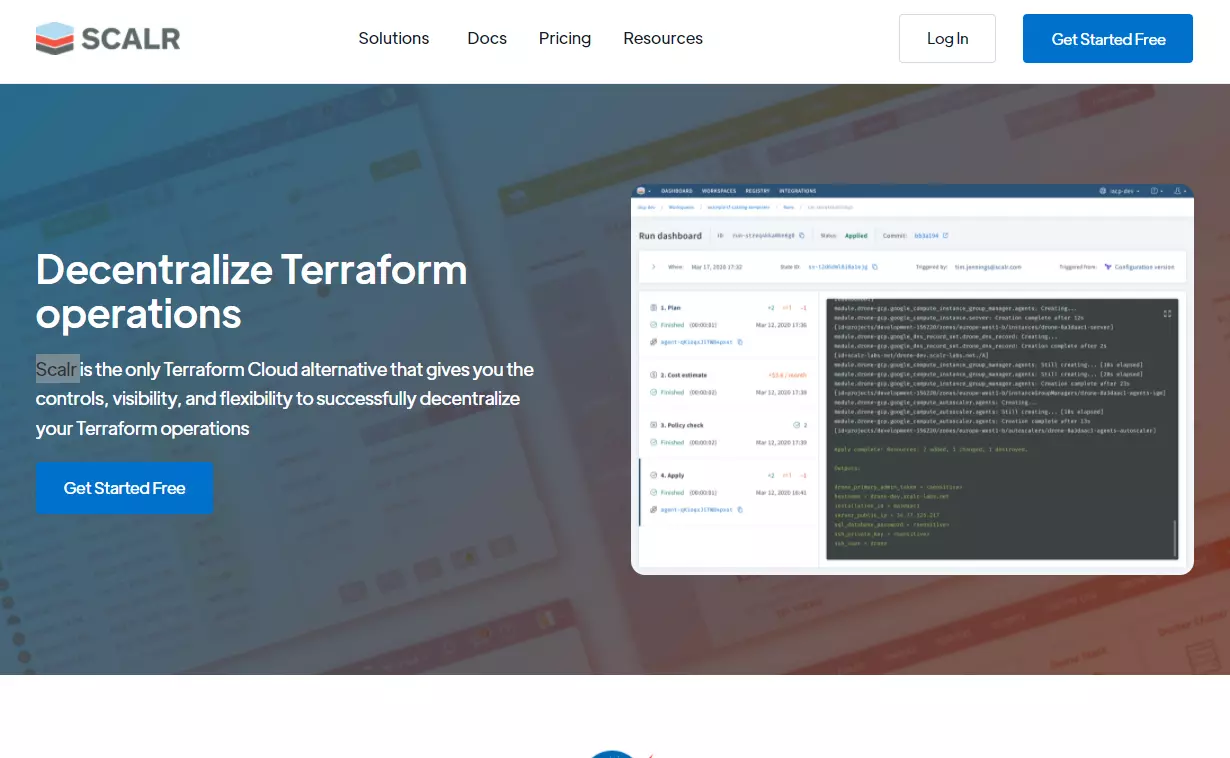
Scalr’s self-service tool allows engineers to create orchestration rules that execute scripts and workflows automatically. You can define your infrastructure configuration with Farm Templates.
Scalr is an ideal remote backend solution for Terraform in AWS. This software provides a centralized run time environment, role-based access control, policy enforcement (Open Policy Agent), as well as state file storage and locking. You can use it for cost analytics, security, and compliance requirements at scale, as well.
With Scalr, you’ll also have a single interface for visualizing, organizing, and managing cloud services from many providers. If you’ve already implemented a hybrid cloud strategy or have workloads running in a public and private cloud, Scalr can help you bring everything together under one platform.
9. Cirrusform – No-Code Cloud Management SaaS Platform
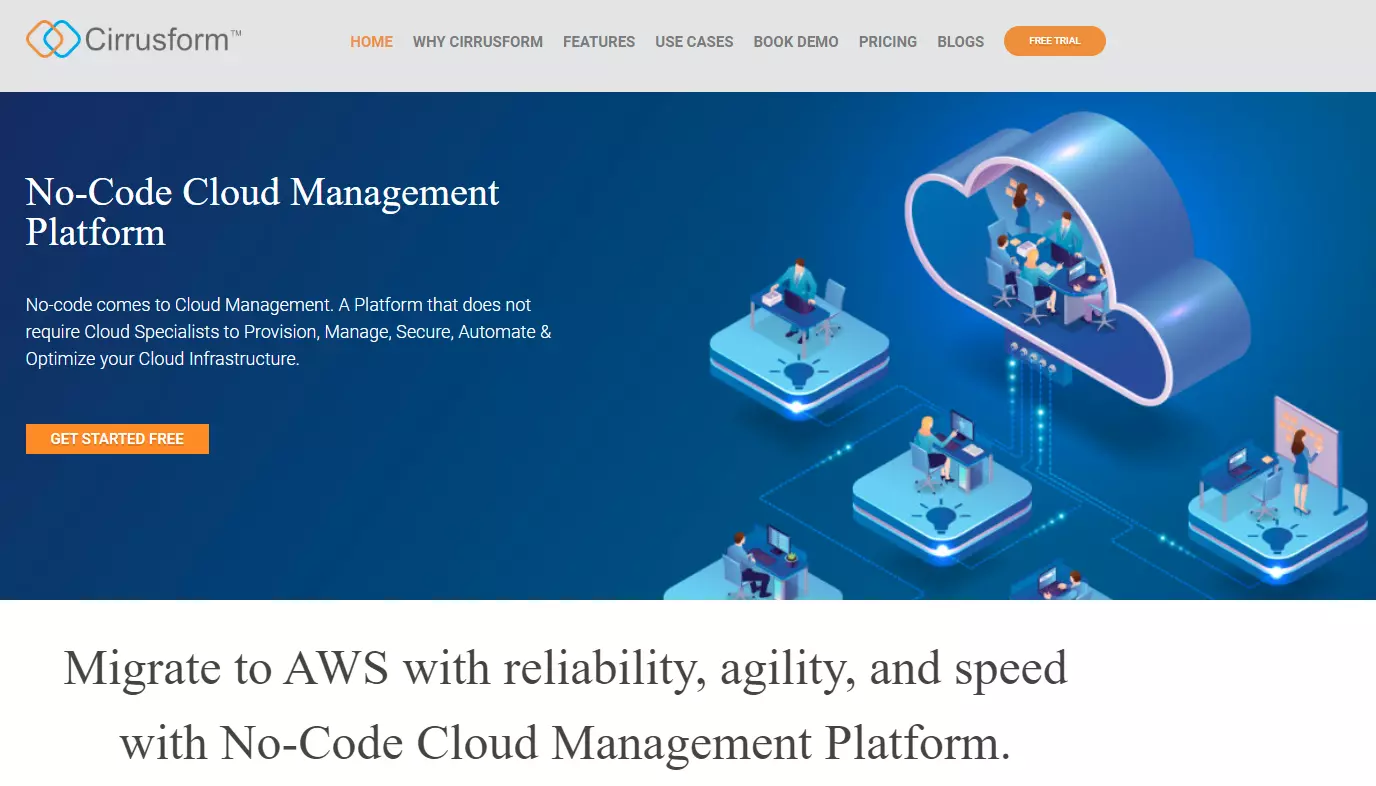
Cirrusform is a cloud management company that offers a no-code platform for optimizing your AWS infrastructure. The company earned an AWS Cloud Management Tools Competency status in 2021 for its effort.
Its ease of use and short learning curve make it popular. Cirrusform eliminates the need to perform manual provisioning, automation, securing, and other tasks to optimize your cloud infrastructure. The tool does it for you with speed and agility.
According to the company, new users can learn and begin integrating and implementing AWS resources within five to seven days.
Collect, Organize, And Control Your AWS Cloud Costs In One Place
CloudZero integrates seamlessly with AWS cloud financial management tools such as Cost Explorer and AWS Budgets to give you a detailed cost breakdown. With CloudZero’s cloud cost intelligence engine, engineering, finance, and C-suite can understand who, what, and why their costs and resource consumption are changing.
By mapping AWS usage and costs to the people, processes, and products that created them, you can more accurately:
- Know where to pull strings to reduce costs without sacrificing performance
- You can make tradeoffs without reducing revenue or harming customer experiences
- Perform cost forecasting and allocations with cost confidence
- Optimize costs to not only reduce your AWS bill, but also dynamically allocate more to operations likely to grow revenue
- Protect your gross margins by controlling your cloud spending
- Understand your cost per customer, so you can determine how to price your SaaS to maximize profits while remaining competitive
- Calculate cost per product feature to help engineers identify architectural decisions that could be improved to increase efficiency
You don’t have to lug around multiple AWS cloud financial management tools when you can manage it all with CloudZero.
With CloudZero, you can also accurately collect, analyze, and report on shared costs in multi-tenant environments and untagged and untaggable resources. You do not have to have perfect AWS cost allocation tags to do this.
 to see these advanced AWS cost management and optimization benefits for yourself.
to see these advanced AWS cost management and optimization benefits for yourself.

